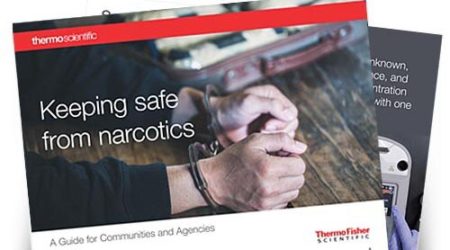 “We took cocaine, and that’s it,” a Colorado woman mumbled before she was taken to a hospital — and her five friends taken to the morgue. The news story reported, though, that when the handheld narcotics instrument analyzed the white powder at the scene, the small screen flashed the word ‘Fentanyl’.
“We took cocaine, and that’s it,” a Colorado woman mumbled before she was taken to a hospital — and her five friends taken to the morgue. The news story reported, though, that when the handheld narcotics instrument analyzed the white powder at the scene, the small screen flashed the word ‘Fentanyl’.
And therein lies one of the major reasons that more and more people in the United States are dying due to overdosing on illegal drugs: they don’t know what they are actually ingesting. They don’t know what’s in the little baggie they purchased or if the people mixing it even knew what they were doing. Only two milligrams of fentanyl is considered a potentially lethal dose, and it’s particularly dangerous for someone who does not have a tolerance to opioids. It’s a recipe for disaster.
The US Department of Justice/Drug Enforcement Administration (DEA) has warned law enforcement and the community at large about this crisis:
“…overdose deaths involving synthetic opioids is primarily driven by illicitly manufactured fentanyl, including fentanyl analogs. Consistent with overdose death data, the trafficking, distribution, and abuse of illicitly produced fentanyl and fentanyl analogs positively correlates with the associated dramatic increase in overdose fatalities.”
The National Institute for Occupational Safety and Health (NIOSH) describes fentanyl as a rapid-acting opioid (synthetic opiate) drug that depresses the central nervous system and respiratory function. It goes on to say that exposure to fentanyl may be fatal as it’s estimated to be 80 times as potent as morphine and hundreds of times more potent than heroin. The DEA is so concerned with this particular drug that it recognized the first National Fentanyl Awareness Day this past summer in an effort to educate individuals around the dangerous threat that fentanyl poses to the safety, health, and national security of the American people.
The first responders on the Colorado scene did not know what they had encountered when they entered the apartment where the victims were found. Law enforcement personnel used a handheld narcotics analyzer that employs a well-established analytical technique called Raman spectroscopy to identify the deadly substance. The news article reported that “A gloved investigator sealed the white powder into plastic bags and scanned them with a handheld laser tool … [and] watched, fascinated… [as the] device compared the substance with nearly 500 possible drugs.”
These handheld analyzers can identify key drugs of abuse as well as common cutting agents, precursors and other threats such as fentanyl, fentanyl compounds and analogs, as well as the fentanyl precursors, NPP and ANPP. The instruments offer a presumptive test that is more accurate and reliable than colorimetric drug tests, providing law enforcement officials with a quicker method to identify suspected narcotics in the field. And, with these analyzers, law enforcement personnel can sample most substances through sealed packaging rather than interacting with the substances to get a sample, increasing officer safety.
Colorado is not the only state affected by fentanyl. According to DEA Administrator Anne Milgram, fentanyl is found in all 50 states, and drug traffickers are increasingly mixing it with other types of drugs in an effort to drive addiction and attract repeat buyers.
The good news is that first responders and law enforcement have the technology to chemically identify many unknown substances on the spot to help keep the public and themselves safe. The bad news is these analyzers cannot prevent drug dealers from flooding the market with even more deadly substances.



Leave a Reply